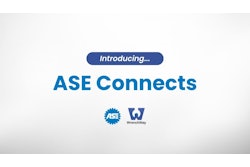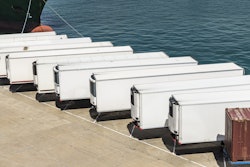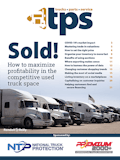It’s such a simple idea with far-reaching benefits that it makes me wonder why it didn’t happen sooner.
Counterfeit products continue to damage the U.S. economy – to the tune of $250 billion a year and 750,000 lost jobs, according to the U.S. Chamber of Commerce’s Coalition Against Counterfeiting and Piracy (CACP). Not to mention the lives put at risk when those counterfeit items are things such as brake pads made of lawn clippings, cat litter and sawdust. While that example may seem extreme, shipments with automotive brake pads made of those materials have been seized by authorities.
Many in the aftermarket – from manufacturers to distributors to end users – are fighting the counterfeit battle. At trade shows, attorneys walk the exhibit floor looking for counterfeit parts and possibly suing the offending exhibitor.
Manufacturers run counterfeit awareness campaigns and work with distributors on how to detect and report counterfeit merchandise. Most distributors self police the problem by choosing their vendors more carefully than ever.
But it is the Technology and Maintenance Council (TMC), a part of the American Trucking Associations (ATA), which is working on a breakthrough idea for the industry. TMC establishes best practices on anything maintenance related in trucking. At its fall meeting last year in Nashville, TMC’s Executive Director Carl Kirk challenged members to address counterfeiting, and shortly thereafter the Counterfeit Parts Task Force was created.
Kenneth Calhoun, manager of on-highway product for United Engines, volunteered to chair the newly formed task force. “If I was going to hitch my wagon to a subject, this was a good one,” he says while providing an update on the group’s progress.
Calhoun says one of the group’s major initiatives is to launch a web-based repository of confirmed counterfeit parts. This will be available through TMC’s website, www.truckline.com, and will provide members with a one-stop destination for new alerts about documented counterfeit parts and for reporting suspected counterfeit parts. It will be an instant-access, around-the-clock resource.
The group is in the process of surveying its membership to build the database of counterfeit parts. Since TMC members represent manufacturers, fleets and distributors, the website should provide an accurate pulse of counterfeiting activity. Additionally, e-mail alerts will go out to members when new instances of counterfeiting are discovered.
Calhoun admits that sorting through intellectual property issues can be a legal minefield, and he is careful to point out that the site will list only parts that are decidedly counterfeit, and not just suspected of being so. He says they do not want to falsely accuse legitimate manufacturers.
More broadly, Calhoun explains, the task force will concentrate on education. “We want to eliminate the demand to kill the supply,” he says. With record high diesel fuel prices, fleets and end users are looking to cut costs where they can, so Calhoun says it’s more important than ever to educate on the true cost of using counterfeit parts.
“We believe this will be an ongoing problem,” says Calhoun. “But the task force will shift and continue to change shape as long as there is demand for it.”
The TMC task force is a solid step in the right direction to combat one of the aftermarket’s most significant challenges. But, for it to work, it will require industry-wide participation. TMC’s recommended practices are the bedrock for many a service provider’s maintenance and repair standards. Let’s hope this TMC initiative is met with as hearty an embrace.







